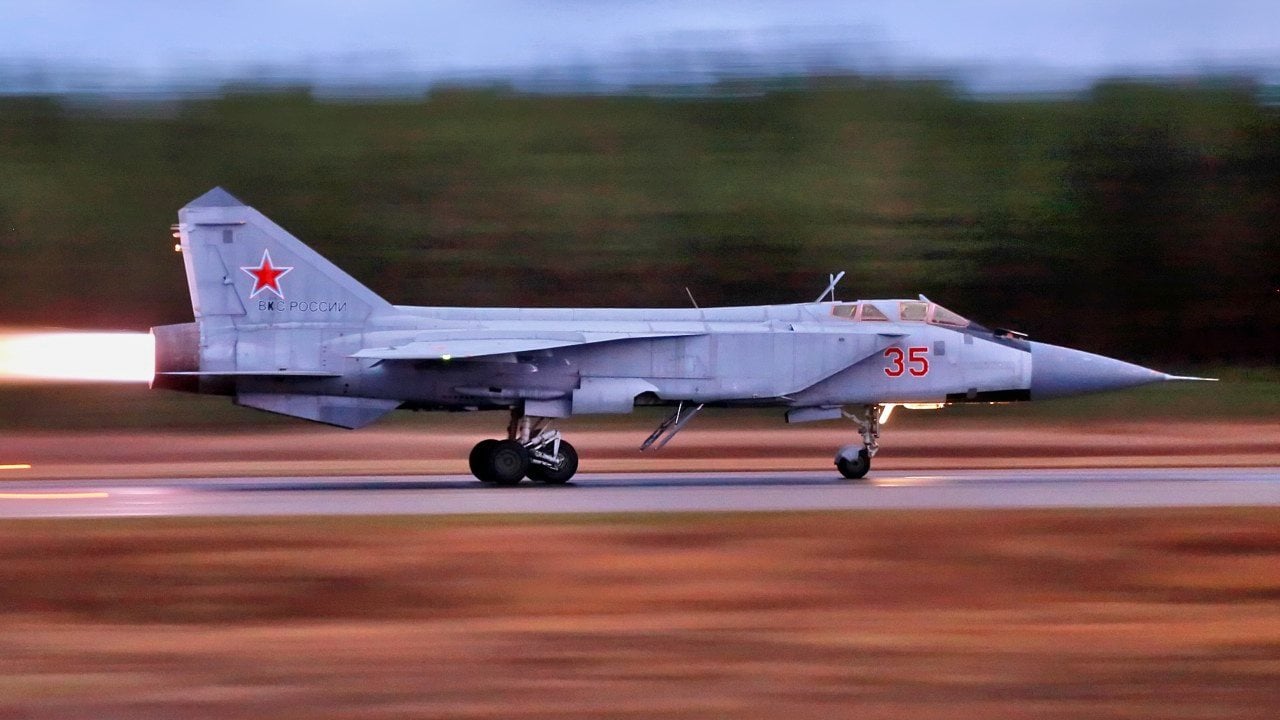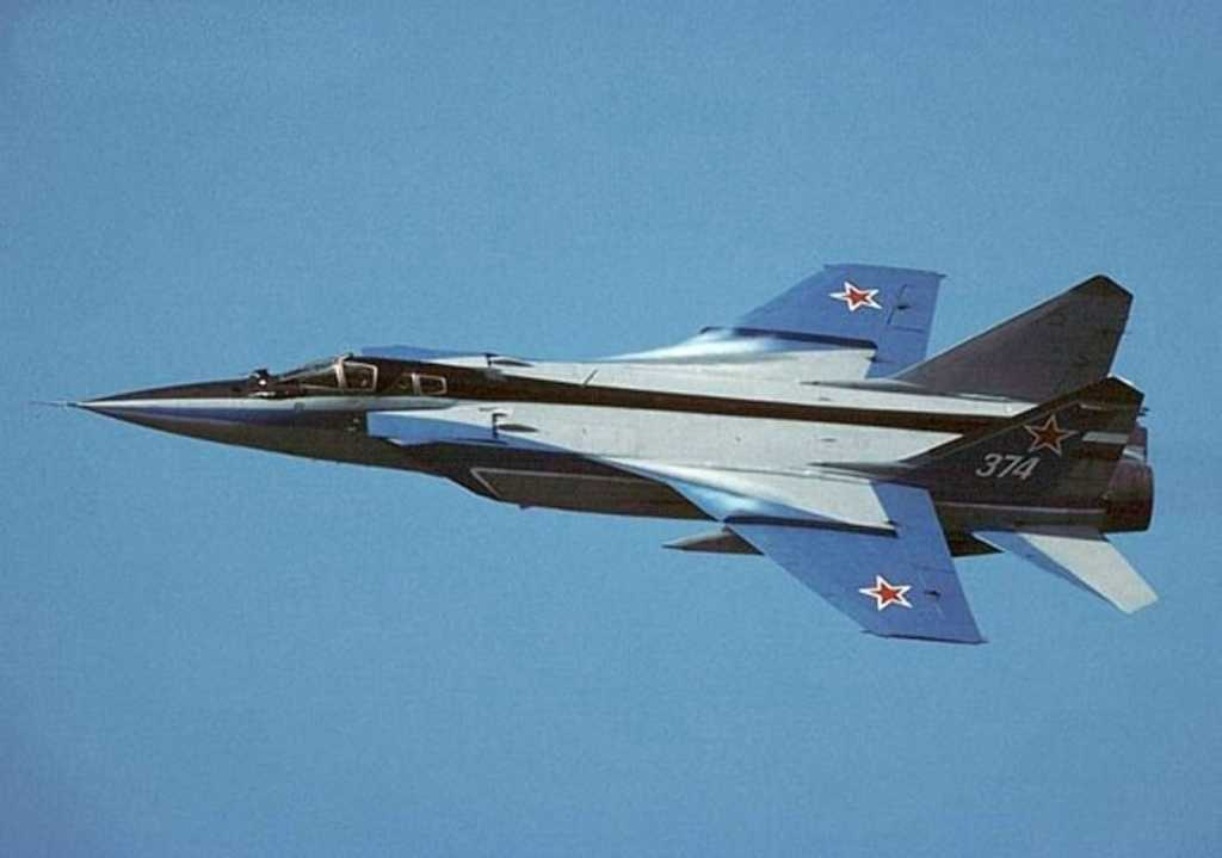Russia's MiG-31 Fighter: Could It Start Shooting Down U.S. Drones?
A Russian military analyst downplayed the capabilities of the RQ-4B Global Hawk UAV, following reports of one being downed over the Black Sea. Igor Korotchenko, editor-in-chief of National Defense, claimed Russian MiG-31 fighters and advanced air defenses could easily counter the drones.
Summary and Key Points: A Russian military analyst downplayed the capabilities of the RQ-4B Global Hawk UAV, following reports of one being downed over the Black Sea. Igor Korotchenko, editor-in-chief of National Defense, claimed Russian MiG-31 fighters and advanced air defenses could easily counter the drones.

-The U.S. Air Force operates about three dozen Global Hawks but plans to retire some for more advanced platforms.
-The drones, used for various missions including ISR and disaster relief, have been accused by Russia of aiding Ukrainian strikes. Despite a recent collision incident, U.S. reconnaissance drone flights over the Black Sea continue.
Russian Analyst Claims MiG-31s Could Down U.S. Global Hawk Drones
A Russian military analyst has downplayed the capabilities of the RQ-4B Global Hawk unmanned aerial system (UAS), just days after a Russian news site claimed that a Global Hawk had been downed over the Black Sea earlier this month. The Kremlin has said it could not confirm that a fighter jet had downed the surveillance drone.
However, Igor Korotchenko – the editor-in-chief of the Russian-based magazine National Defense and the founder and director of the World Arms Trade Analysis Center – claimed that Russian air defenses could make easy work of the RQ-4B. He also said the drones would be no match for the Kremlin's most advanced fighters.
"One should understood that, with US strategic aerial reconnaissance drones, the only, perhaps, adequate way to influence them will be to use MiG-31s, which will be able to pass in close proximity to them and have an impact that can either cause the UAV to fall, or urgently return to the airfield it had departed from," Korotchenko told Russian state media out TASS on Tuesday.
"However, such methods are rather 'exotic,' as they require, firstly, the MiG-31 pilot to have great skills, and secondly, theoretically do not rule out such air incidents as a possible collision with an enemy drone - either due to piloting error or unreasonable actions of operators that remotely control the UAV," the Russian military analyst added.
The U.S. Air Force is believed to operate around three dozen of the high-flying Global Hawk drones, yet, has announced plans to retire as many as 24 of those to replace them with a more advanced surveillance UAV platform – notably the stealthier RQ-180.
The Global Hawk's mission has been to support a broad spectrum of U.S. intelligence, surveillance, and reconnaissance (ISR) collection capabilities; and to support joint combatant forces in worldwide peacetime, contingency, and crisis operations. The drones can also be used for humanitarian assistance and disaster relief operations. The UAVs are designed to provide persistent, day and night, high-resolution, all-weather imagery of large geographic areas with an array of integrated sensors and cameras.
Valid Target for Russia?
The Russian Foreign Ministry has alleged that RQ-4B Global Hawk drones have been employed in reconnaissance flights over the Black Sea near Crimea and that one was "on duty" on June 23 when Ukraine launched its airstrike on Sevastopol. Several missiles struck a beach near a Russian, killing four people including two children, while more than 100 were wounded.
Moscow described the strike as a "terrorist act," and while Kyiv has not commented on the attack, it came a day after a Russian guided-bomb struck an apartment building in the city of Kharkiv, killing two and wounding more than 50.

Korotchenko suggested the most effective way to counter the drones would be to employ long-range surface-to-air missile systems, notably the S-400 or S-300V, which are armed with long-range SAMs. He also said that the air-to-air missiles carried by the Mikoyan MiG-31 (NATO reporting name Foxhound) could shoot down the Global Hawks.
"However, this requires an appropriate legal justification such as a special regime for the use of this segment of airspace, or certain restrictions to be set by the Russian side, which should also, preferably, be based on an earlier precedent of a similar kind," the analyst said. "Or Russia will be forced to create such a precedent itself."
Drone Flights Scaled Down
The U.S. military had scaled down flights of reconnaissance drones over the Black Sea last year after a Russian Sukhoi Su-27 (NATO reporting name Flanker) collided with an MQ-9 Reaper drone in March 2023.
"Our MQ-9 aircraft was conducting routine operations in international airspace when it was intercepted and hit by a Russian aircraft, resulting in a crash and complete loss of the MQ-9," Air Force Gen. James B. Hecker, the commander of U.S. Air Forces Europe and Air Forces Africa said in response to last year's incident. "In fact, this unsafe and unprofessional act by the Russians nearly caused both aircraft to crash."
History may likely repeat itself as both Russian fighters and U.S. drones will continue to fly over the Black Sea.
Author Experience and Expertise: Peter Suciu
Peter Suciu is a Michigan-based writer. He has contributed to more than four dozen magazines, newspapers, and websites with over 3,200 published pieces over a twenty-year career in journalism. He regularly writes about military hardware, firearms history, cybersecurity, politics, and international affairs. Peter is also a Contributing Writer for Forbes and Clearance Jobs. You can follow him on Twitter: @PeterSuciu. You can email the author: [email protected].
All images are Creative Commons or Shutterstock.


